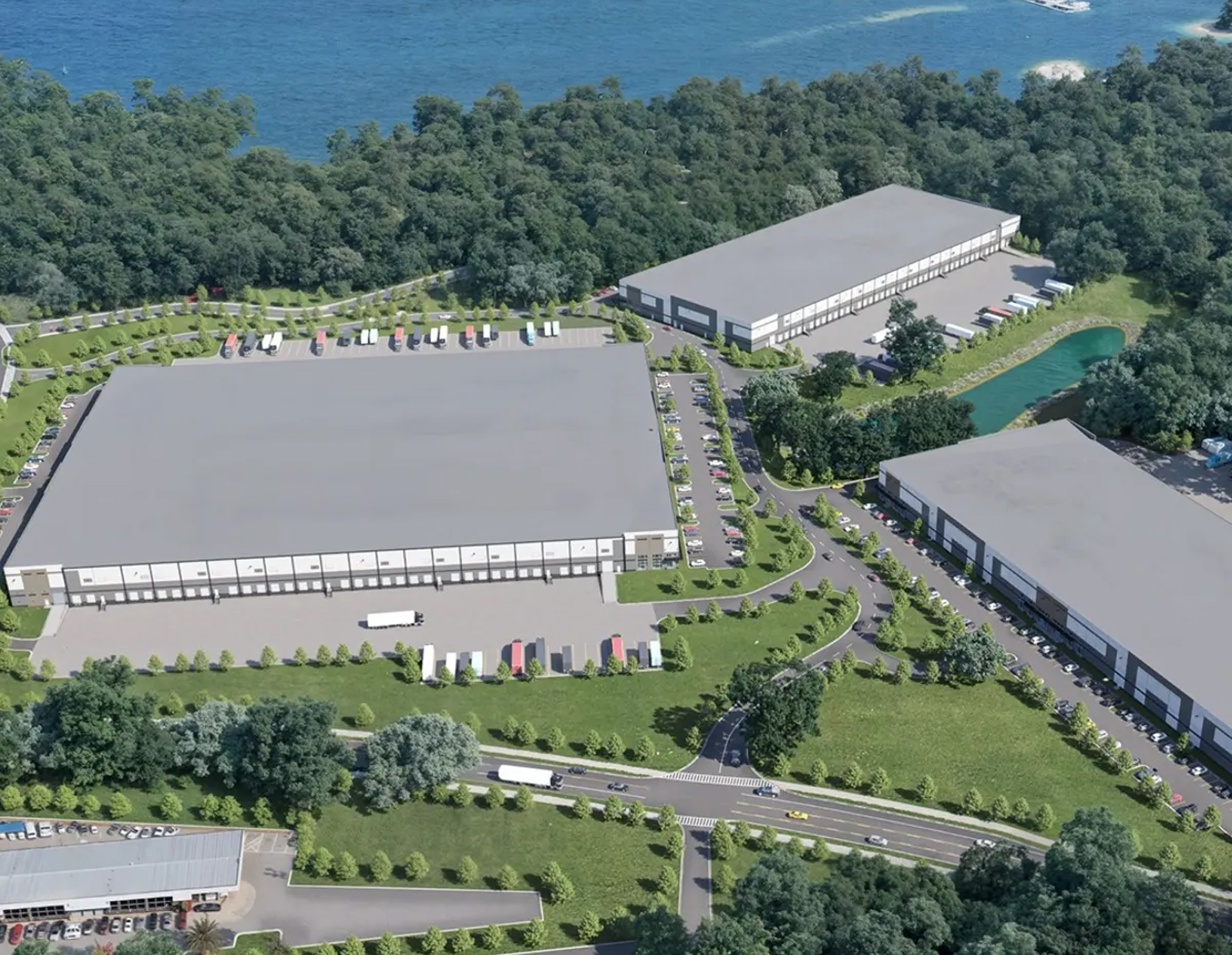NAIOP Special Report: Will Tariffs Tax CRE’s Industrial Sector?
Scenarios differ widely, and it's time to prepare, experts advised at the annual event.
Tariffs have dominated the thinking and strategies of executives for months, but what will the prospective impact on the industrial sector be?

“The sheer uncertainty of what the tariff rate is going to be—that is more important than any given percentage rate,” said Lisa DeNight, managing director for national industrial research at Newmark, during NAIOP’s I.CON East conference in Jersey City, N.J., last week.
Noting that the deadline for countries to make their best and final offers in the tariff negotiations was June 4, she suggested that the best-case scenario is an average effective rate of 10 percent.
The focus on the moving parts around tariffs may overshadow some realities of larger trade deals. A 2015 study by the Peterson Institute found that negotiating agreements takes about 18 months on average, noted Charlie Smith, managing director for geopolitical strategy at Newmark. Negotiations for the agreement between the U.S., Mexico and Canada started in 2017, the deal was signed in 2019 and went into effect the following year. “The recent history would show that trade deals take a while to get going and then be put into implementation,” “Everyone wants a better deal than the last guy.”
Let’s make a trade deal
Despite current trade tensions and the likelihood of a bumpy negotiation process, the U.S., Mexico and Canada have “plenty of motivation to get a deal in place” when the trilateral trade deal talks get under way, Smith said. A clause in the treaty calls for each nation to confirm whether it wants to continue participating in the treaty by July 1, 2026.
READ ALSO: How Trade Shifts Impact Port Real Estate
In the midst of the tariff-related confusion, industrial occupiers and owners must calibrate their strategy to meet the needs of their customers. “We have no idea yet what the cost impact to the consumer is going to be, and certainly to the (majority) of the companies that are exposed to the trade shocks,” DeNight said.
In determining next steps for their space needs, logistics end users appear to be taking three basic approaches, according to DeNight. Some are basically frozen and are not making decisions. A second group has gone deep into study mode, assessing such issues as their portfolio footprints, labor needs and sourcing partners. Significantly, these end users “are not making any concrete decisions about space,” DeNight noted. And a third category consists of occupants which are trying to optimize their leases to position themselves to weather a possible downturn.
Tariffs could bring economic pros and cons, according to Newmark’s analysis. A possible benefit could be to slow the development pipeline and encourage more manufacturing in the U.S. On the other hand, uncertainty could prompt major corporations, especially consumer-facing, to hit pause on major leasing decisions. A projected price impact of $2,800 per household could reduce consumption. Canada, Mexico and other countries could expand domestic production and seek other trade partners.
“We definitely have seen a number of projects that probably would have kicked off this year in terms of spec warehouse projects being pushed back a little bit because of the macro uncertainty, or because of the new costs associated, or all of the above,” DeNight reported.
Smart planning
“Everybody should be doing scenario planning,” said Smith, sketching out three possibilities. In the worst case, final decisions about tariff rates would be postponed until 2026 and result in a 30 percent global baseline that would include U.S. free trade partners. The upshot: a trade collapse, reoriented domestic supply chain flows, and lost occupancy that would cut net absorption.
READ ALSO: Industrial’s New Groove: Gradual Growth and Tariff Talks
A neutral scenario would be marked by a resolution in the medium term and an average 10 percent global baseline rate that would leave carveouts for Mexico, Canada and other free trade partners. Trade and space absorption could continue to grow in a balanced manner, if at a slower pace.
Under best-case conditions, the tariff question would be resolved soon with a 5 percent baseline, an expanded pool of free trade partners, minimal impacts on trade and resurgent dealmaking.
Amid the focus on tariffs, investors and operators should not overlook the influence of states in shaping industrial opportunities. “Texas has a semiconductor innovation fund. South Carolina passed an energy reform bill, and they’re not isolated,” Smith said. “These key manufacturing sectors, the energy sector, housing policy—a lot of things are happening at the state level that we haven’t seen in years.”
Offering some parting thoughts about the big picture, Smith advised: “Expect more changes over the course of this year. You should be thinking more long-term to where the demand epicenter is going to be.”







You must be logged in to post a comment.